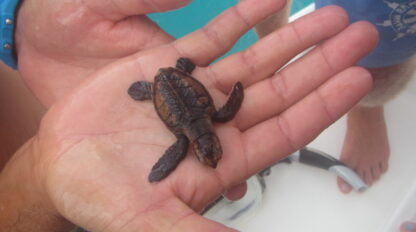Cephalopod Awareness Days
Each year, during the second week of October, cephalopod lovers world-wide try to spread the word about this amazing group of animals. What’s a Cephalopod, you ask? Excellent question!

Cephalopods are the class of Mollusks that includes the Octopus, Squid, Cuttlefish, and Nautilus. The word “Cephalopod” (Latin) literally translates to English as “head-foot,” and it’s a very appropriate name. These invertebrates have bodies that are organized so their head is connected to their feet and their torso is stacked on top of their head! Yep – their eyeballs, brain, and mouth are found where their bellybuttons would be if they were placental mammals (which means their guts are above their eyes… weird).
Without a doubt, they are the most “intelligent” invertebrates out there – especially octopuses and cuttlefishes. They have been observed using tools (This octopus carries a coconut around so it can hide anytime it likes) and problem solving (This octopus doesn’t just open a jar to get the food inside… it steals a bait canister while fighting off a shark too!).
These guys really seem to have super powers! Below you’ll find a few of my favorite facts about each type of cephalopod:

Octopuses: Not only are they smart and incredibly strong, but they can also fit through tiny spaces without injuring themselves. They are absolute masters of disguise, shifting their skin texture and coloration (by expanding & contracting pigment cells called chromatophores) at will to camouflage perfectly with their surroundings. They do this even though they are color blind! They can even “taste/smell” with every suction cup.

Cuttlefishes: Don’t be confused, they aren’t “fish” at all! These guys are excellent communicators and use their chromatophores to signal to one another, hypnotize their prey, and to show emotion. The color patterns they use are brilliant and so incredible they seem almost alien. They are so charismatic I could post so many videos, but instead I will just direct you to YouTube where you will find enough great footage to boggle your mind =D

Squid: Talk about variety! All squid have 8 arms and 2 tentacles but they come in all shapes and sizes (read about the GIANT Squid and its arch nemesis) and live at all depths of the ocean. Some are solitary and some travel in huge schools, all can change their colors to communicate or camouflage to some extent, and others actually biolouminesce (Learn about bioluminescence). Some squid have mastered jet propulsion so well that they can even “fly” through the air for long distances!

Nautiluses: You are much less likely to see these creatures in the wild because they live in such deep water, so you should definitely watch this video to see them in action. They are considered “living fossils” and are the only cephalopod to still have an external shell. They use the chambers in their shell as buoyancy compensation devices by adjusting the amount of gas to help them float or sink as needed. They have over 90 tentacles and are also the only cephalopod that does not create an ink cloud when threatened – perhaps this is because they can completely hide inside their shell.
Craving more awesome knowledge?! You can follow our marine biology Twitter feed @marinebiology to keep up to date on M-Bio news, cool videos, and fun facts! And if you’re an ocean lover, be sure to also check out the great marine biology summer camps Sail Caribbean offers for teens!

